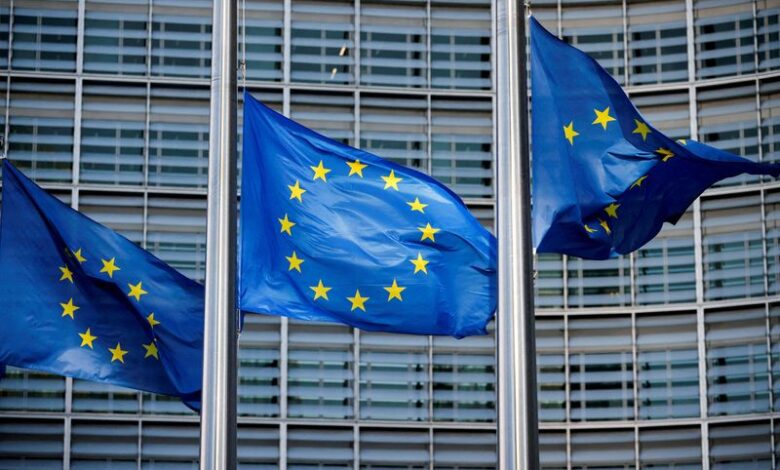Dip in euro zone inflation bolsters case for ECB easing


© Reuters. FILE PHOTO: European Union flags fly outside the European Commission headquarters in Brussels, Belgium, March 1, 2023.REUTERS/Johanna Geron/File Photo
FRANKFURT (Reuters) – Euro zone inflation dipped further this month, strengthening the case for the European Central Bank to start easing interest rates from record highs later this year, data from some of the euro zone’s biggest economies showed on Thursday.
The ECB has kept interest rates at record highs since September but talk has decisively shifted to cuts as price growth is now moving closer to target, even if some crucial areas like services and wage growth remain a concern.
Inflation eased in France, Spain and many of Germany’s largest states, while labour market slack in Germany, the 20-nation euro zone’s biggest economy, increased a touch, potentially pointing to some easing wage pressures, national authorities said.
The figures suggest that euro zone inflation, to be published on Friday, will show a slowdown to around 2.5% in February from 2.8% January, moving even closer to the ECB’s own 2% target.
“Overall, today’s prints show that the disinflation process continues in the euro zone and suggest we will see a small decline in the February print,” Leo Barincou at Oxford Economics said in a note.
In France, EU harmonised inflation dipped to 3.1% from 3.4% while in Spain, it slowed to 2.9% from 3.5%. In Germany, most states reported big dips, suggesting that a fall to 2.7% from 3.1% as expected by economists, was realistic.
Still, ECB policymakers are likely to argue that lower energy prices are dragging down overall inflation and that is masking less favourable trends for underlying prices.
In France, services inflation slowed to just 3.1% from 3.2% while core inflation in Spain was still 3.4%, uncomfortable readings that could point to a rebound in overall price growth further down the road.
The ECB will next meet on March 7 and while no policy change is expected, the bank is likely to acknowledge the improved inflation outlook, which will eventually open the door to rate cuts, perhaps around mid-year.
Thursday’s national data also offered some mild good news on the labour market, the single biggest risk factor for prices because wage growth is too rapid.
The number of people out of work in Germany increased more than expected in February with the number of unemployed growing by 11,000 to 2.713 million.
The change is minor, however, and the jobless rate remained stable at 5.9%, doing little to lift the euro zone’s own rate from a record low 6.4%.
The tight labour market is an anomaly. The euro zone economy has stagnated for the past six quarters and unemployment would normally rise sharply in such an environment.
But firms are hanging onto labour, thanks to healthy margins and because firms fear that finding labour will be difficult once the upswing starts.
“Despite some mixed aspects, the (German) labour market data continue to be very resilient, given the weakness in overall growth,” JPMorgan economic Greg Fuzesi said. “High levels of labour shortages, weakness in the workweek and decent corporate positions may be contributing to this.”



